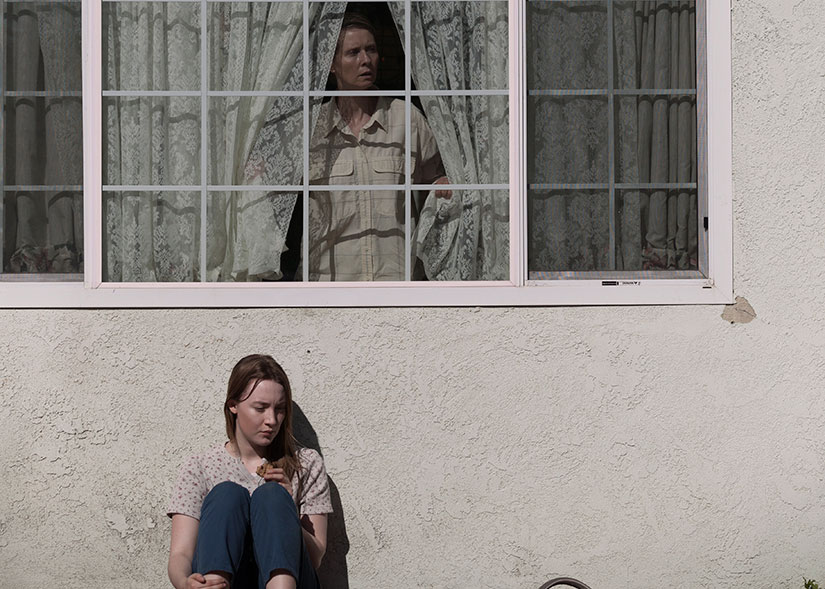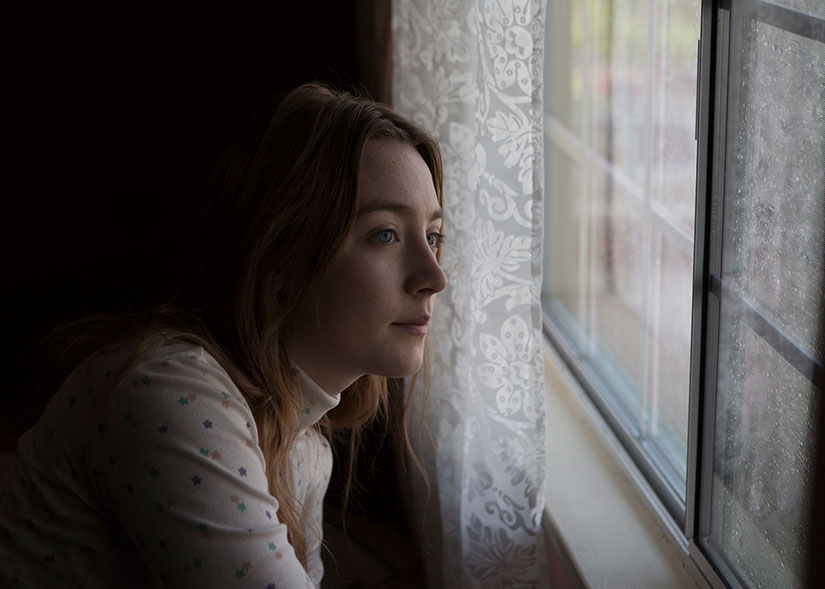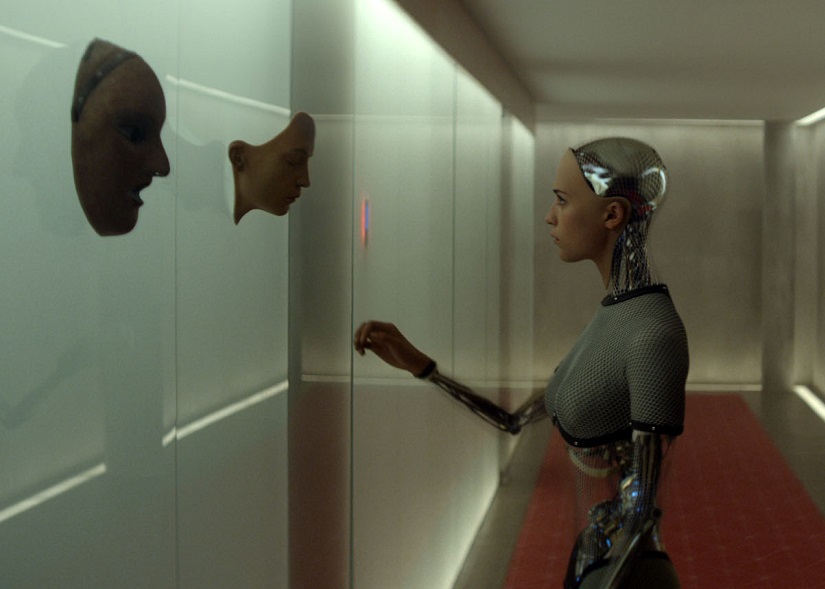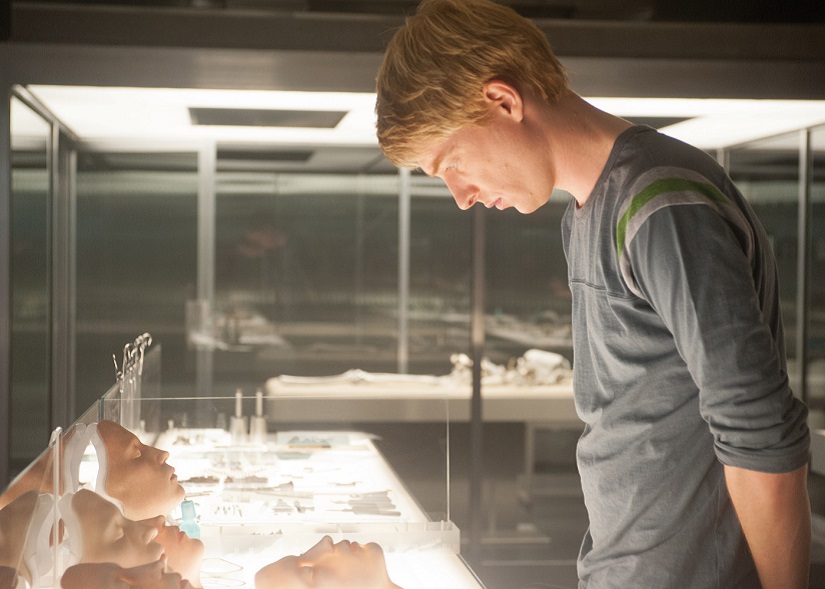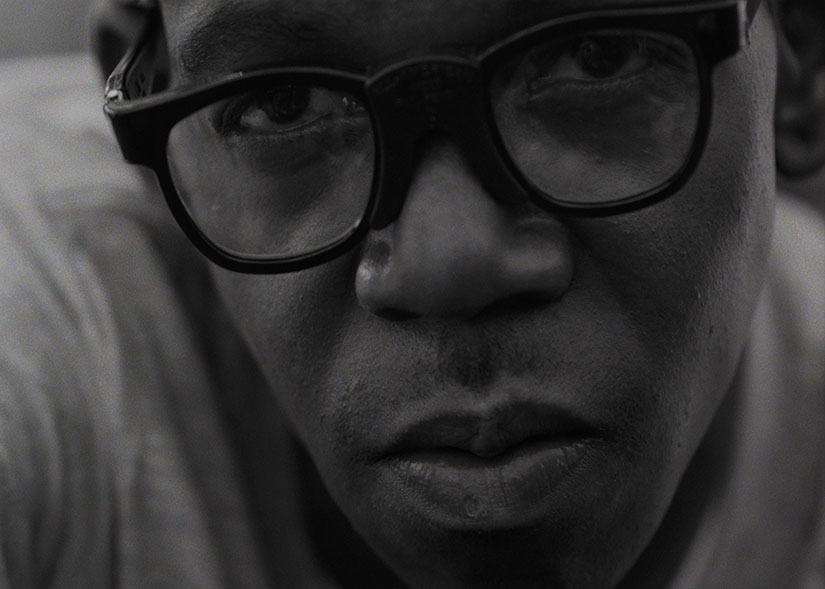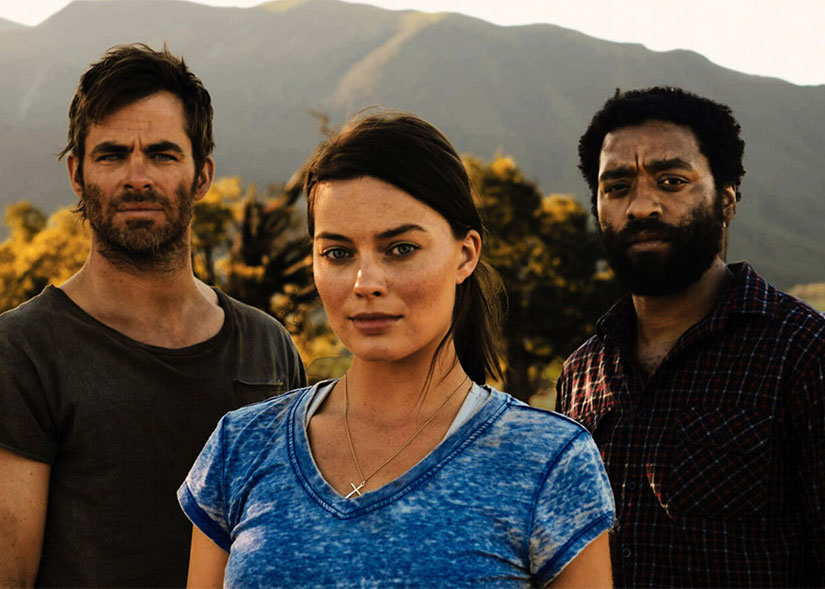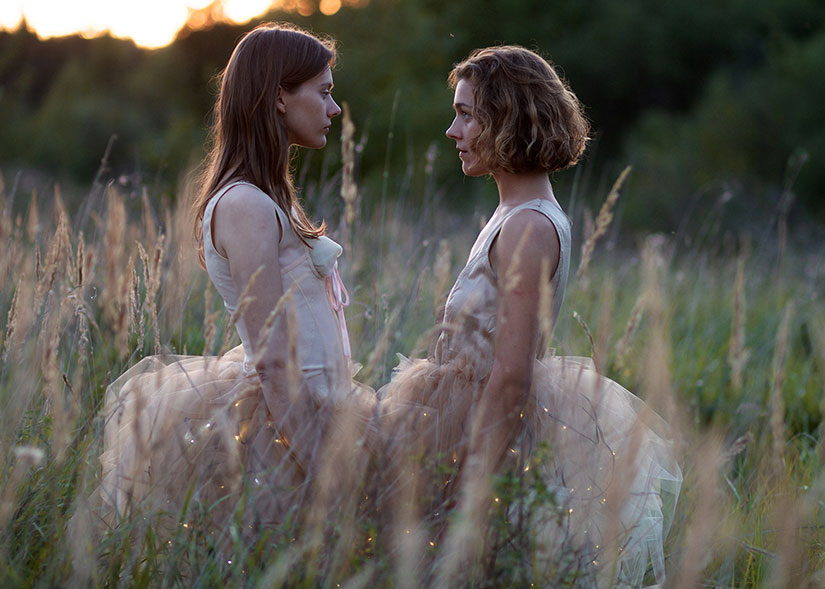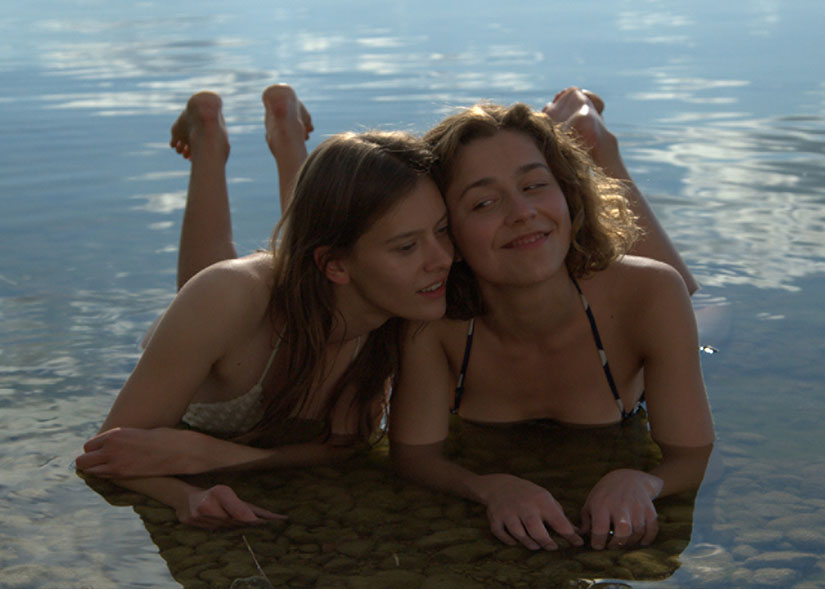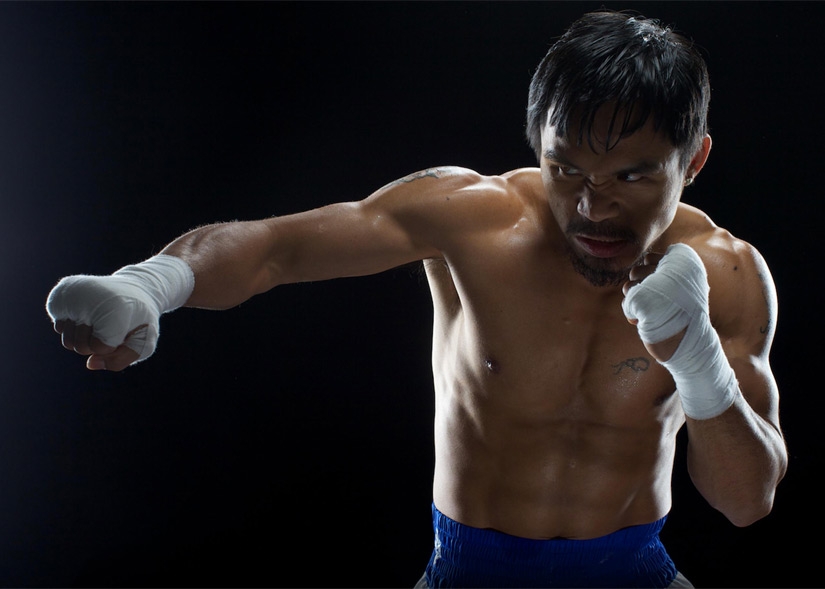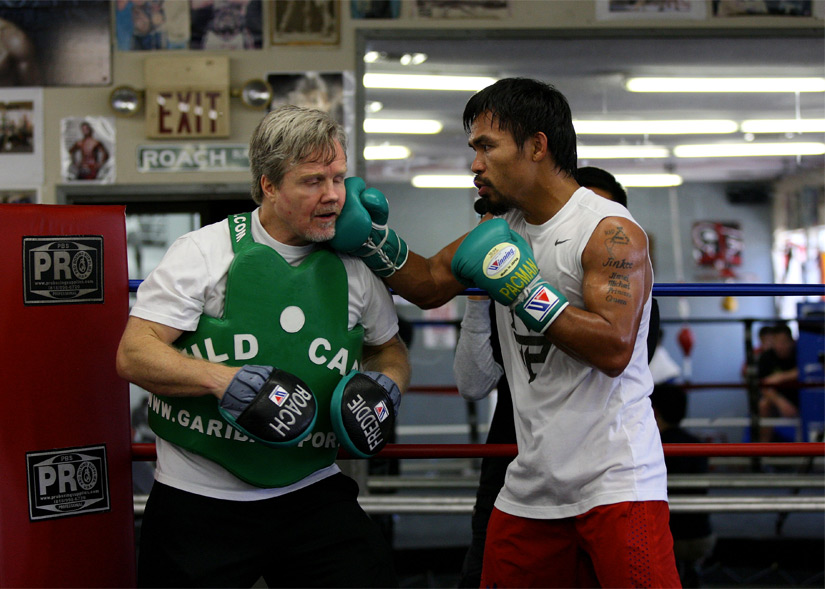[Sundance Review] Stockholm, Pennsylvania
Can a film be considering exceptional if the first two acts are brilliant, but trails off as the third act rears its ugly head? That’s the question I’d like to address with my review for Stockholm, Pennsylvania. As all forms of art are concerned, the full product is only as good as its weaknesses, and unfortunately, Stockholm, Pennsylvania showed so much promise, just to dovetail into a disappointing ending.
Stockholm, Pennsylvania
Director: Nikole Beckwith
Rating: N/A
Release Date: January 23, 2015 (Sundance)
After 17 years of captivity, kidnapping victim Leia (Saoirse Ronan) returns home to parents she has no recollection of. While Glen (David Warshofsky) is passive (but confident) about Leia’s transition into her new life, Marcy (Cynthia Nixon) is desperate to recreate the attachment and bond between a mother and her child. Yet, despite all of Marcy’s attempts to reconnect, Leia’s transfixed with her captive, Ben (Jason Isaacs), while also struggling to make sense of reality and the lies Ben fed her for almost two decades. After no progress is made, Marcy’s desperation takes a dark turn as she suddenly becomes the monster she tried so hard to protect Leia from.
[youtube id="uzES5iXnO7E"]
The acting in Stockholm, Pennsylvania is brilliant. Ronan and Nixon delivered performances that should honestly be considered for major studio nominations. Leia is written as a complex character who is both headstrong and confident in herself, yet naïve to the real world. As the story progresses, Leia begins to break out of the hold that Ben held on her while she attempts to make sense of her new life. Ronan’s ability to balance the contrasting elements of Leia’s character should not go unnoticed, and will hopefully elevate her to the next level. On that same note, Nixon’s take on Marcy is so thrilling and provocative as audiences witness a Mother driven to dark lengths to ensure she can once again become the mother to her child that went 17 years without one.
The performances wouldn’t be as strong as they were without writer/director Nikole Beckwith’s vision. Stockholm, Pennsylvania is adapted from her stage play, and it truly shows thanks to the close-knit scenes between actors. Structured much like a short story, many of the narrative’s details go unsaid, leaving audiences to fill in holes. As someone with a Literature background, I loved how the details left unsaid shared the same importance with the details that are openly addressed.
However, as I inferred earlier, the film comes apart in the third act as Marcy spirals into an antagonistic role towards Leia. The character twist comes off too exaggerated and unrealistic and essentially changes the film’s tone from a psychological drama to a pseudo-suspense thriller that ultimately takes away from all of the goodwill built up prior to the conversion.
Despite a disappointing third act, Stockholm, Pennsylvania is still one of the better films I watched at Sundance. Beckwith’s take on examining the post script of a life following such a traumatic event like Leia experienced is intriguing, especially in the wake of the media blitzes that surround these situations; it’s a perspective that many don’t typically consider. With stellar performances by Ronan and Nixon, Stockholm, Pennsylvania is well worth the price of admission, even if the ending ultimately falls flat.
[Review] Ex Machina
Ever since Fritz Lang's Metropolis, female androids - or gynoids, to use the correct term - have been presented in cinematic science-fiction as a means of exploring man's conflicted relationship with female sexuality. Where Lang's 1927 opus dissected the impact of male fears on a religious and social level, Alex Garland's Ex Machina updates the story to a modern age where the fight for control over women's bodies has gone digital. The unsettling atmosphere which builds from the first meeting between Domhnall Gleeson's jittery tech nerd Caleb and the robotic Ava, constructed by Oscar Isaac's unstable Steve Jobs-alike Nathan, is as much down to the imbalance in control that the two men exert over Ava's existence as Garland's taut control of pace and tone.
Caleb is brought in by the reclusive Nathan to administer the Turing Test to Ava. However, since Caleb is aware of Ava being an AI from the start, Nathan posits that the real success will be if Caleb starts to regard her as a real person irrespective of that foreknowledge. Much of the drama unfolds through a series of conversations where Caleb increasingly feels as though it is he who is being tested, caught in the middle of a battle of wits between Nathan and his creation.
[youtube id="EoQuVnKhxaM"]
Ex Machina
Director: Alex Garland
Rating: R
Release Date: January 21, 2015 (UK)
As an effective three-hander - one other character features semi-regularly, but remains silent - the movie hinges on the performance of its leads to make the conversations as engaging as they need to be to sustain the drama. Of the three, it's Alicia Vikander's Ava who steals the show. It's hardly the first time we've seen this kind of performance in playing an AI - wide-eyed inquisitiveness, slightly inhuman movement, innocent demeanour - but Vikander ever so gently uses the body politics of the piece against its audience, using her character's awareness of her enforced passivity to inflect sadness and fear even while not playing them directly.
Ava's relationship with Caleb takes place entirely on either side of a glass screen and Vikander, with microscopic subtlety, evokes a sex worker talking to her client through a webcam, expressing desires and affections that can never quite be alluring enough to obscure the artifice of the performance. When she chooses to show Caleb what she would wear for him on a date, affecting a wig and a dress to conceal her transparent robotics, the scene carries a lingering sense of sadness that is reinforced with the sight later on of her undressing again, alone in the dark. Caleb later challenges Nathan over whether Ava was programmed to flirt with him, showing himself unable to distinguish between his outward anger at feeling manipulated and his inner frustration at being unable to indulge his fantasy that the object on the other side of the screen could be capable of sincere human intimacy. A late reveal about the parameters Nathan used in designing Ava only increases the underlying ugliness of the metaphor.
Oscar Isaac certainly gives Vikander a good run for her money. His Nathan is fearsome and mercurial, wracked by a genius-level intellect at once fuelling a self-image of a man on the verge of crossing the threshold into divinity, while stoking a barely suppressed paranoia about being destroyed by his creations, an internal psychological conflict he attempts to control through drink and violent exercise. Ava is his parallel: calm and controlled, intellectually curious but welcoming and engaging towards Caleb in lieu of Nathan's domineering idea of friendship. Domhnall Gleeson too is as captivating a screen presence as ever, hiding a calculating cunning behind Caleb's nebbish exterior.
Beyond its characters, the movie takes place exclusively in a single location, Nathan's uber-modern hideaway in the stunning Norwegian wilderness. Garland slowly transforms the idyllic locale into an automated prison, contrasting the natural but sombre light of the house's upper levels, where the boys eat and play with nature all around them, if once again behind protective screens, with the windowless lower floors, where Nathan's research takes place under the sterile, unwavering glow of man-made light. The only misstep is the suffocating red lighting which accompanies the system-wide shutdowns occasionally forcing the house to reboot itself, a rather too obvious choice for a rather too obvious motif for the creator's inability to fully understand and control his creation. That said, Garland deploys the same lighting trick to enormously creepy effect during a dance scene set to Get Down Saturday Night, more effectively playing into Caleb's sense of being overwhelmed by his feelings of totally losing control of himself to Nathan's manipulations.
Despite Garland reaching the director's chair following a celebrated career as a novelist and screenwriter, his command of storytelling through visual language and the performances of his actors surprisingly proves more effective than his on-the-page plotting, which while commendably low-key and never losing sight of its subject matter, is a little predictable in its twists and occasionally blunt in its dialogue exchanges. There is never any doubt that Garland knows his audience is questioning everything shown and told to them, frequently doubling back on itself to maintain the same pervasive uncertainty which dogs Caleb throughout. Even with all the twists and turns, however, it's disappointing when more than once the obvious first guess turns out to be correct.
These are, however, minor quibbles in what proves something of a sister piece to Spike Jonze's Her. Where Jonze's movie played up the sadness of a time when many of humanity's most committed and honest relationships are to their machines and devices, Garland is more outwardly confrontational in condemning technology's role in reducing others, particularly women, to nothing more than an image on a screen to be observed, shared and manipulated at the user's whim. It makes a compelling case for the difference between attraction and objectification, with one a means of connection and the other a method of control. When Caleb asks Nathan why Ava was given sexuality at all, Nathan responds with what seems a considered response to humankind's compulsion to act and interact, before sneeringly pulling an about-turn by suggesting that what Caleb wants to know is whether or not he can fuck her, with the answer being yes. The worrying thing is that for all the philosophical grace of the first answer, one suspects that Nathan is correct in assuming the second is what Caleb really wanted to hear.
[Sundance Review] Cronies
There’s something special about Cronies that resonated strongly with me as I watched the film (and even carried over hours after the credits rolled). Whether it was the depiction of a Midwestern summer afternoon, the familiar characters in which I saw some of my own friends, or just my over-thinking nature of examining how friendships change throughout the years, I felt attached to Cronies, and there’s enough to like and dissect within the film that I believe anybody would enjoy it. Read on as I further explain why Cronies surprisingly became one of my top films from Sundance this year.
Cronies
Director: Michael J. Larnell
Rating: N/A
Release Date: January 25, 2015 (Sundance)
Louis (George Sample III) is a 20-something trying to get his life on track to provide for his girlfriend and their daughter. However, he appears to be held back from growing up thanks to his childhood friend, Jack (Zurich Buckner), dragging him around in the same monotony that Louis is desperate to escape. Adversely, Louis’ new friend and co-worker, Andrew (Brian Kowalski), represents a fresh direction for Louis that could help with his growth. However, as Jack and Andrew meet for the first time, bravado initially takes over as they both size each other up. As the day progresses, the three of them form a sense of camaraderie, even as the dangers of their day spent together grow more and more threatening.
Cronies is framed like a documentary where various interview segments with the three men take place throughout the film. It’s in these segments that we begin to see each characters’ true feelings about one another and their various situations. Admittedly, the interviews can be seen as a cheap way to flesh out each character’s arc and development, but they’re a stylistic decision made by writer/director Michael J. Larnell, and one that I definitely enjoyed. Also abetting Larnell’s vision is the film being shot almost entirely in black and white, save for a few flashback scenes that appear in color. It’s a nice aesthetic, especially when Larnell flips what we’ve come to expect in regards to how color is used to represent time and memory.
Most importantly, Cronies examines friendships in a way that feels natural without becoming too heady or preachy. We’ve all found ourselves playing the role of Louis, Jack, and Andrew at some point in our lives, and we’ve all had friends very much like them, as well. It’s this universal understanding of friendship that makes Cronies so enjoyable. There's no doubt that Larnell won't suffer any sense of a sophomore slump with his next film, especially considering how strong this debut is.
[Sundance Review] Z for Zachariah
Post-apocalyptic media is growing a bit long in the tooth. Granted, I’ll still show excitement over any film that hones in on the sci-fi element of a world devastated by some unknown disaster, but changes and alterations to the formula are much needed. When I read Z for Zachariah featured a love triangle set in the South following some untold incident, I was hooked. The minimal cast featuring 2013’s break-out actress Margot Robbie, Chris Pine, and Chiwetel Ejiofor didn’t help with my excitement.
[youtube id="a_Kay2ldHEY"]
Z for Zachariah
Director: Craig Zobel
Rating: N/A
Release Date: January 24, 2015 (Sundance)
Robbie stars as Ann, a Southern Christian woman who is left alone to fend for herself after her family left to find survivors, but never came back. During one of her scavenges, she comes across John (Ejiofor) bathing in a waterfall poisoned with radiation. Ann is able to rescue John and nurse him back to health, and the two understandably are drawn to one another. Just as the sexual tension is about to come to a head, they are approached by a mysterious man, Caleb (Pine), who threatens the serenity between John and Ann. Whereas John is an atheist, both Caleb and Ann share the same religious beliefs, and emotions are thrown out of sync as both men attempt to balance their respective attraction to Ann with their duties for survival.
With the film kept to three primary actors, each are given ample opportunities to shine. However, and not as a knock against Ejiofor and Pine, but Robbie shines in her performance, building upon her stunning performance in the aforementioned The Wolf of Wall Street. Robbie was able to deftly balance a complex array of emotions that define her Ann with equal parts innocence, strength, and desire for finding love. Ejiofor’s John also balances a sense of security and protection towards Ann while slowly revealing a dark and violent side, while Pine’s Caleb is surrounded by mystery that leaves audiences with a feeling of skepticism over his true intentions.
Z for Zachariah’s strengths are in its cast’s performances, yet it leaves you wanting more. My gut reaction following my screening of the film, outside of tremendous praise for Robbie’s performance, was that it would find acclaim through festival circuits, but wouldn’t attract much mainstream attention outside of Robbie’s involvement. However, as I’ve written this review, I found myself enjoying the film more than I initially did. In saying that, Z for Zachariah may be one of those films that will grow on you as more time passes. If you’re expecting instant gratification, you’ll ultimately be let down.
[Sundance Review] The Summer of Sangaile
One thing I’ve noticed at Sundance this year is the amount of coming of age films that are featured on the program. One such film is The Summer of Sangaile, a Lithuanian film that features two culturally different teenage girls developing a romantic, electric connection with one another. If this sounds somewhat similar to 2013’s Blue is the Warmest Color, that’s because there is indeed a lot of similarities between the films; however, whereas Blue is the Warmest Color was comical in its depiction of love (perhaps due in part to its source material being a graphic novel), The Summer of Sangaile is grounded and offers a sweeter approach to first love.
The Summer of Sangaile
Director: Alante Kavaite
Rating: N/A
Release Date: January 22, 2015 (Sundance)
Sangaile (Julija Steponaityte) is a somewhat awkward teenage girl vacationing in Lithuania for the summer transfixed by stunt planes despite her fear of heights. Noticing her fascination with the planes, Auste (Aiste Dirziute) rigs a contest to allow Sangaile to ride in one, but she refuses. Auste’s determination to befriend Sangaile goes undeterred, and the two quickly connect with one another, resulting in an undeniable romantic and sexual chemistry that allows both girls to open up to one another. However, as they grow closer, Sangaile’s level of comfort begins to be pushed as Auste attempts to fully break her out of her shell.
The strength of the film comes in the performances by the two women. While the characters themselves (and ultimately, the narrative as a whole) are a bit cliché, both Steponaityte and Dirziute are able to carry their characters past any aforementioned clichés. Dirziute especially shines in her debut film with a sense of subtle longing in her mannerisms, like a gaze directed at Sangaile that lasts just long enough.
The Summer of Sangaile, like most foreign festival films, may not get wide distribution, but should still be searched for by those that appreciate strong cinematography and coming-of-age films. Unfortunately, the tired character archetypes and predictable narrative ultimately hold The Summer of Sangaile back.
[Review] Manny
[This review was originally published during our SXSW 2014 coverage. It is being reposted to coincide with the documentary's wide release.]
[youtube id="5-L2tTtLLVA"]
Manny
Directors: Ryan Moore and Leon Gast
Rating: N/A
Release Date: March 8, 2014 (SXSW)
Manny Pacquiao is one of those figures that can transcend from their initial platform and find success in multiple ways outside of what they're known for. And, for better or worse, Manny Pacquiao has become not just a boxer, but a singer, an actor, a politician, and a missionary of sorts. Diehard Pacquiao and boxing fans have seen the effects of overexertion in a handful of his fights, and I always wondered how Pacquiao himself viewed his journey. In Manny, not only is the question of Pacquiao's identity explored, it delves deeper into the boxer's history to paint a better, more detailed picture of who Manny is outside of the ring and away from the spotlight.
As a half-Filipino man, I have to say that I'm very familiar with Pacquiao's story. As a young boy growing in poverty in the Philippines, Pacquiao turned to boxing to support himself and his family. After finding success, it wasn't until he was paired with famed trainer and former boxer Freddie Roach that Pacquiao's star began to rise in which he has (so far) captured eight different titles at eight different weight classes. All of this is retreaded ground for anybody familiar with either boxing or Pacquiao, and the background information on Pacquiao is necessary for audiences that may not be familiar with Manny. However, what I loved most about the documentary is that not only does it create a running narrative of Pacquiao's "rags to riches" story, it pairs it well with amazing cinematography, editing, and a mix of both on-location shots and archival footage to properly tell Pacquiao's real story, with both good and bad sides given equal focus.
The big question I asked myself (and both director Ryan Moore and editor Lenny Mesina) was the nature of the documentary's intent: Is it meant to appeal to pre-existing Pacquiao fans, or is it meant to bring in those that may not be familiar with Pacquiao? I believe that Manny appeals to both groups, but pre-existing fans will find something extra to enjoy about the documentary. I won't even lie, I found myself getting teary-eyed, not only because of my admiration for Pacquiao as a boxing fan, but for everything he represents as a cultural icon for The Philippines.
Again, I'm biased when it comes to Manny, and I felt a stronger connection to this documentary than everything else I viewed at SXSW. However, with my bias set aside, I truly believe that Manny will find success in both pro-Pacquiao circles and general documentary/cinephile circles. When it comes to sports documentaries, fans will always have a connection they will turn to to better understand the recipient of their cheers and pride; however, I think the real magic is when a well-crafted documentary can turn viewers into a fan of the subject, and I believe Manny is capable of doing that.
[Review] Paddington
If you've heard of Paddington, it's probably thanks to the 'creepy Paddington' meme which popped up following the movie's ill-received first trailer. There's no denying that Paddington looks a bit uncanny valley thanks to CGI which isn't always up to the expected modern standard, but it would be a great shame were it to put people off seeing the movie, which unexpectedly proves one of the funniest and most charming family releases in some time.
Big screen adaptations of beloved childhood stories and characters have not traditionally gone well outside a few happy exceptions, and those familiar with Michael Bond's sweet but slight series of books and the 1975 series of 5-minute shorts (easily found these days on YouTube) would have good reason for doubing whether the material was a suitable fit for extending to feature length. Those doubts are quickly dispelled by the movie getting its first big laugh within a minute of starting, riffing on the Victorian trope of the gentleman explorer in an opening which amounts to a sort of reverse Up!. It establishes the tone neatly and concisely, allowing the gags and set-pieces to build on each other and create a nicely balanced comic rhythm that gives the best jokes enough time to stand out and discarding weaker material before it can become a problem.
[youtube id="7bZFr2IA0Bo"]
Paddington
Director: Paul King
Rating: PG
Release Date: January 16th 2015
King puts to good use his previous experience as director on cult surrealist comedy The Mighty Boosh to good use in creating a London at once familar but fantastical, enlivened by bold colour contrasts and a keen eye for bringing out the character of each area of the city. As the story of a young bear who travels to the big city in search of a new home, Paddington wears its themes about immigration and integration on its sleeve, revelling in the flavours and textures of an urban melting pot of cultures and ethnicities bound by a very English affection for the eccentric. It's a wonderfully inclusive portrayal which doesn't preach, but instead offers an arresting vision of the best possible version of what such a city could look like. It is just about the most English thing you'll ever see, right down to an entirely positive delight at cross-dressing humour, which inexplicably earnt the movie a higher age rating and proved the censors less open-minded than the movie they were assessing.
That eternal positivity is what defines Paddington more than anything else. Despite one early misstep, caving to the misconception that children's movies are seemingly obligated to have at least one sad thing happen, the movie's refusal to surrender itself to cynicism or sneering irony is a welcome relief. Pop culture references are few and far between, with the only really prominent one a visual gag played to absolute perfection in the final act, and even the threat of Nicole Kidman's villainous taxidermist is played almost entirely for laughs, right down to her receiving a beautifully humiliating comeuppance.
Paddington himself is a perfect translation of Michael Bond's creation, curious and clumsy but polite and well-intentioned to a fault. The CGI may be a bit wonky at times - a frankly terrifying CGI chihuahua turns up halfway through - but does good work visually conveying the character's personality, matched by Ben Whishaw's immediately winning vocal work. On the human side, anyone who has seen Happy Go Lucky will know Sally Hawkins' ability to radiate pure wide-eyed joy, put to wonderfully sweet and funny use as the free-spirited matriarch of the Brown family. Hugh Bonneville of Downton Abbey plays her officious husband (graceful writing makes it clear why and how much they love each other, despite the gulf in personalities) and gets no shortage of opportunities to put his gift for straight-faced humour to excellent use. Even the Brown family children are sufficiently well-drawn to be ingratiating rather than grating, and while Julie Walters and Peter Capaldi are sadly not given enough to do despite their valiant efforts, there are strong cameos from Matt King (Super Hans from Peep Show) and Jim Broadbent in particular as a kindly antique shop owner with a love of train sets and afternoon tea.
Paddington is one of those rare movies which comes out of nowhere to prove a complete joy. From its boundless enthusiasm for a perfectly timed bear pun - including a sat-nav joke which still makes me laugh just to remember it - and relentless optimism in people's essential good natures and ability to form bonds with even the unlikeliest of strangers, it is childish in all the best ways and sufficiently confident in its tone not to need to segregate its humour between younger and older viewers. 2015 got off to a bleak start in the real world, making Paddington a welcome infusion of unapologetic joy and silliness in dark times.
[Review] The Sheik
The wrestling community is one of the most loyal circles of fandom I've ever experienced. Regardless of the behind-the-scenes nature of predetermined match outcomes, wrestling is one of those things you can't ever shake off. Like most adults in their late-20s, I grew up watching WWF, but drifted away from the sport as I got older. Over the summer, however, I fell back into the swing of things thanks to the nostalgia offered through the WWE Network, and it's with this newfound sense of nostalgia over the old WWF that many others like myself have fallen back in love with our real-life superheroes of yesteryear.
One such man, Khosrow Vaziri, better known by his wrestling name The Iron Sheik, has found himself at the forefront of social media with his viral tweets that are both "works" that reflect his wrestling persona, but also "shoots" that may just reflect who he really is. The Sheik is an intimate look at Vaziri's career before, during, and after his time with the WWF. As anybody familiar with wrestling knows, it enters very dark territory, but thankfully, this is one story that has a bright and happy ending.
[youtube id="mFtjwz0J7ik"]
The Sheik
Director: Igal Hecht
Rating: N/A
Release Date: December 2nd, 2014 (VOD)
Like many documentaries, The Sheik follows a loose timeline that tracks Vaziri's career from his amateur days as part of Iran's army, a member of the Shah's personal bodyguards, and his success as an amateur wrestler and coach in the United States. However, it wasn't until his initial run with the WWF that Vaziri was elevated to new heights. Under the guise of The Iron Sheik, Vaziri played a pivotal role in not only shaping both Hulk Hogan's career and the trajectory of the WWF's future success, but also shaping the mainstream success and pop culture viability of pro wrestling.
The Sheik offers an inside look into Vaziri's life outside of wrestling, including his family life, his struggles with drug addiction, and the general strife most old wrestlers have faced once they stopped actively wrestling. The Sheik is the most in-depth look at arguably the WWF's biggest heels to ever step into the ring.
However, while the documentary does detail some of Vaziri's life outside of the squared circle, it doesn't go as in-depth as most documentaries would. This could be due to the fact that one of his managers, Jian Magen, played an active role in writing and shaping the documentary. This is fine, but obviously it doesn't allow the project to be an objective look at Vaziri's life and character; rather, it serves as a means of illuminating upon his life beyond what the public may know, but in a way that is promotional. Again, there's nothing wrong with it (and I had no problems with it), but some might want an unbiased account of Vaziri's history.
The Sheik still stands as the most comprehensive documentary of The Iron Sheik, and fans of the wrestler, whether it's due to nostalgic memories of him facing Hogan or more modern fans who know of him through his social media presence, will enjoy it thoroughly. It was great to see so many other wrestling icons, like The Rock, Mick Foley, Jake "The Snake" Roberts, Jim Ross, and others share some of their thoughts and memories about The Iron Sheik, but again, a little more in terms of insight and going beyond the surface level would have been more exciting and entertaining for fans.

